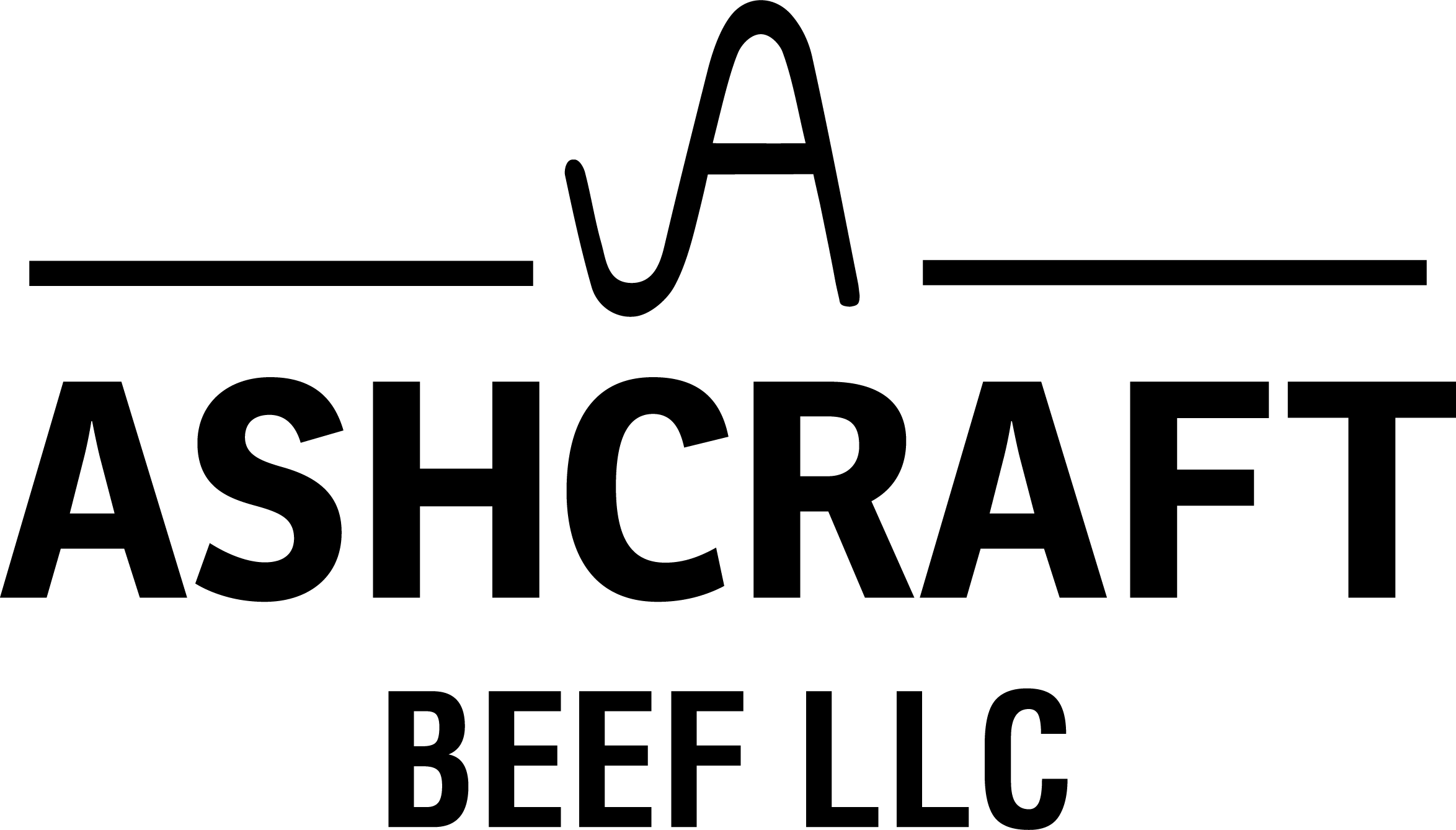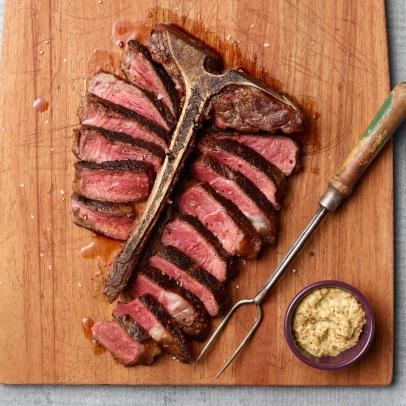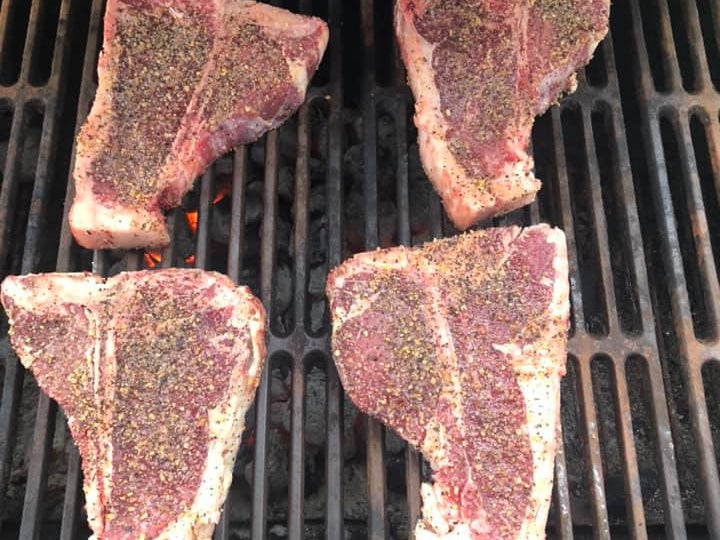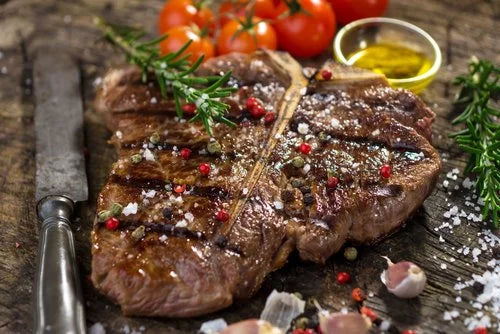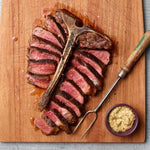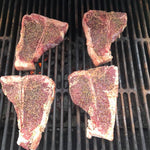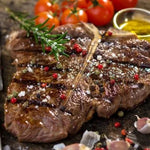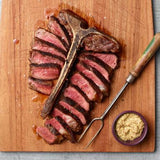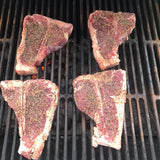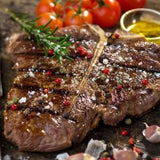T-Bone Steak 25-32 oz.
T-Bone steak is a prime cut of beef that comes from the short loin of a steer. This cut of meat is rich in flavor and has a high marbling score, making it a valuable choice for discerning steak lovers. This steak is versatile and can be cooked in a variety of ways, making it a popular choice for culinary professionals.
Your T-bone will come 1/pack and 1.5" thick and be 25 to 32 ounces each.
DISCLAIMER: Please note that this product is not kept in stock, so after placing your order, there may be a waiting period of up to one month.
📦Shipping and Returns📦
Guaranteed Shipping & Returns
All orders will be processed within 24 hours after order is placed or as soon as products are available.
All shipped orders will be sent out via FedEx on the following MONDAY after order is placed.
Due to the perishable nature of this product, NO RETURNS ACCEPTED.
All sales are final.
If you feel that your order did not arrive as stated above, please send a photo on the day of arrival, to kelliedashcraft@gmail.com and we will asses the issue at that time. We strive to deliver your meat still frozen/partially thawed but we understand that once it leaves our facility, it is completely out of our control. We will work with you to resolve the issue.
Materials
All meat is from cattle that WE RAISE and OWN, not outsourced by any means. All of our beef is inspected and packaged at a USDA processing plant. Our meat is vacuum packed in poly bags then flash frozen to lock in and preserve the quality of the meat product and extending its shelf life.
The shipment will arrive in cube boxe(s) with recyclable panel inserts containing dry ice and/or gel ice packs. Your order(s) may arrive still completely frozen or partially thawed - depending on the time of year it is shipped and your shipping location from Ennis, TX. If your beef arrives partially thawed, it is still perfectly acceptable to consume. Refrigerate or freeze immediately upon arrival.
Caring for your beef....
- Perishable foods should be stored in the refrigerator at 40°F (4 °C) or below or freeze immediately.
- Refrigerate perishable food (meat, seafood, dairy, cut fruit, some vegetables, and cooked leftovers) within 2 hours. Bacteria that causes food poisoning multiply quickest between 40°F and 140°F.
- Ensure the fridge temperature is correct and accurate as to not spoil food.
- Thaw frozen food safely in the refrigerator - DO NOT thaw our beef in cold water or the microwave.
- Never place cooked food on a plate that previously held raw meat, poultry, seafood, or eggs unless the plate has been washed in hot water with soap.
- When handling perishable food, wash all your cutting boards, countertops, pots, and utensils regularly in hot water with soap.
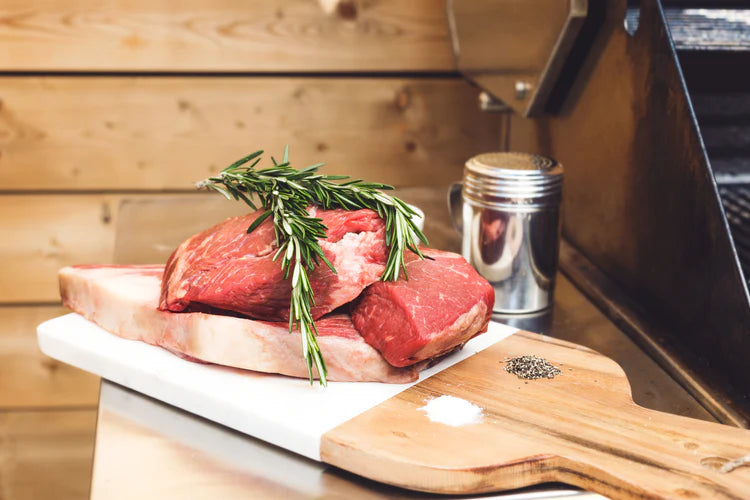
Our Guarantee
Our cattle are raised on a 100% antibiotic and hormone free ranch. We use rotational grazing to ensure our cattle are eating the most nutrient dense grass they can. We supplement with top quality hay that we also grow here on the farm. Our cattle are finished on a combination of grass and natural grains. The grain is a mixture of corn, cotton seed hulls, beet pellets, oats, sunflower meal pellets, and mineral. You can rest assured that we strive for the best tasting Angus beef that we can produce.

FAQ
What is "Beef"?
According to the USDA Beef From Farm To Table:
The domestication of cattle for food dates to about 6500 B.C. in the Middle East. Cattle were not native to America, but brought to the New World on ships by European colonists. Americans weren't big eaters of fresh beef until about 1870, due to the enormous growth of the cattle industry in the West. The introduction of cattle cars and refrigerated cars on the railroad facilitated distribution of the beef.
"Beef" is meat from full-grown cattle about 2 years old. A live steer weighs about 1,000 pounds and yields about 450 pounds of edible meat. There are at least 50 breeds of beef cattle, but fewer than 10 make up most cattle produced. Some major breeds are Angus, Hereford, Charolais, and Brahman.
"Baby beef" and "calf" are 2 interchangeable terms used to describe young cattle weighing about 700 pounds that have been raised mainly on milk and grass. The meat cuts from baby beef are smaller; the meat is light red and contains less fat than beef. The fat may have a yellow tint due to the vitamin A in grass.
"Veal" is meat from a calf which weighs about 150 pounds. Those that are mainly milk-fed usually are less than 3 months old. The difference between "veal" and "calf" is based on the color of their meat, which is determined almost entirely by diet. Veal is pale pink and contains more cholesterol than beef.
How are your cattle raised?
All meat is from cattle that WE RAISE and OWN, not outsourced by any means. All of our beef is inspected and packaged at a USDA processing plant. All cattle start out eating grass; three-fourths of them are "finished" on specially formulated feed based on corn and other grains such as cotton hull seeds, beet pellets, oats, sunflower meal pellets and a protein powder.
How is your beef inspected?
Inspection is mandatory; grading is voluntary, and a plant pays to have its meat graded. USDA-graded beef sold at the retail level is Prime, Choice, and Select. Lower grades (Standard, Commercial, Utility, Cutter, and Canner) are mainly ground or used in processed meat products. Retail stores may use other terms which must be different from USDA grades.
USDA Prime beef (about two percent of graded beef) has more fat marbling, so it is the most tender and flavorful. However, it is higher in fat content. Most of the graded beef sold in supermarkets is USDA Choice or USDA Select. The protein, vitamin, and mineral content of beef are similar regardless of the grade.
Do you own your cattle?
YES! All beef comes from cattle that we raise and own, not outsourced from any other source. Every animal is born and raised on our farm, which we also live on. After that, they are taken to a USDA inspected processing plant and brought back to the farm for resale.
